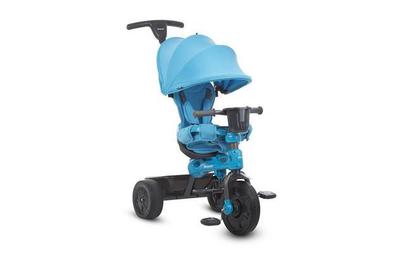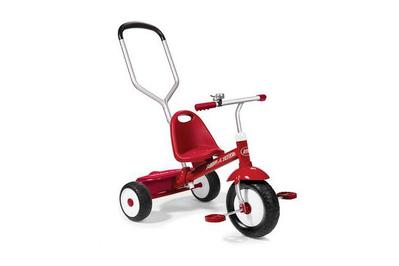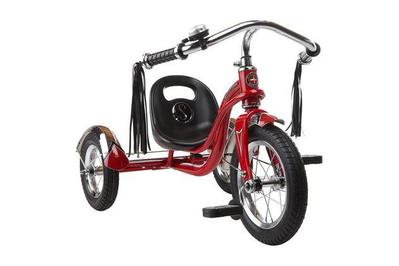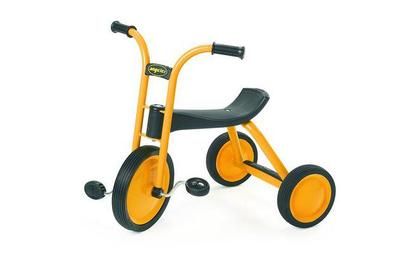Our pick
The Joovy TriCyCoo 4.1 is far more versatile than the shiny-red metal trike or the ground-hugging plastic Big Wheel you had as a kid (modern replicas of which we also tested). The trike can be used as young as 9 months in the first of its four grow-with-me configurations, with a padded ring that circles the bike seat and your baby as well as a parent push bar that allows you to use it like a stroller. It also has a storage compartment, a cupholder, and a sunshade that is significantly bigger and more functional than those we found on other grow-with-me models. As your toddler grows, you remove the shade, the safety ring, and the push-bar, and the trike transitions to a big-kid mode where, rated for use with 4-year-olds up to 44 pounds, it continues to excel against competitors. With an average weight and one of the most stable designs we tried, the Joovy was easier to start, pedal, and maneuver than any of the other 10 top trikes we tested. It’s one of the more expensive tricycles out there, and it doesn’t include a bell, but with such a wide age range it’s still a good value for the price.
Runner-up
The Radio Flyer Deluxe Steer & Stroll isn’t as versatile as our pick for littler kids, because it doesn’t have a protective ring and straps to hold a baby in place and lacks a sunshade. We also found that it’s not quite as nimble to steer and easy to pedal as the TriCyCoo once kids are riding on their own. But the Radio Flyer trike is usually less expensive than the Joovy and is still a great option for a toddler who is learning to pedal; it’ll generally work well for kids ages 2 to 5. The high seat back on this trike helps provide the support new riders need to learn to pedal (it’s slightly higher than the Joovy’s) and the bike comes with an old-school bell for signaling parents to get out of the way.
Also great
Larger and heavier than other trikes we tested, the shiny, metal Schwinn Roadster has low-rider style, with chrome handlebars, festive tassels, a loud bell, and a wood platform in the back for an admiring friend to hitch a ride on. Beyond the glitz, we found that the Roadster provides a smooth, stable ride, especially compared with similar low-riders made of plastic (like the modern version of the beloved Big Wheel). The Roadster’s size and weight makes it better balanced than our pick, even in fast turns. Its steel construction is durable, with pneumatic tires that support weight up to 50 pounds.
Upgrade pick
The tricycle a kid learns to ride at school—and usually pedals well for the first time—is often an Angeles trike, a generally higher-quality tricycle than what most kids have at home. Even though the company sells more to institutions than directly to parents, you can buy an Angeles tricycle at retail. It comes at a higher price than our picks, but you can likely pass it on to other kids as well. Despite its heavier weight, we found that the smooth-riding Angeles was as easy to start and pedal as our pick. The preassembled bike is extremely stable, with spokeless wheels and a large banana seat that accommodates up to 70 pounds of weight, so it remains fun for bigger kids after they’ve outgrown our other picks.








